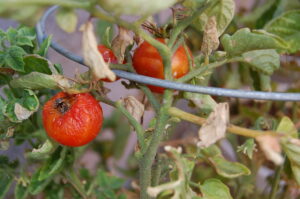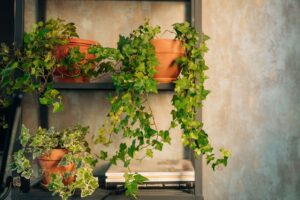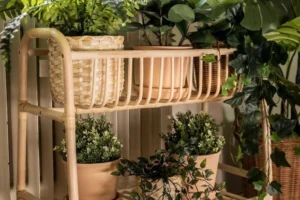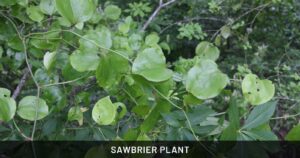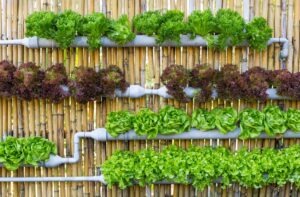Incorporating Native Plants into Your Garden: A Complete Guide
Are you looking to transform your garden into a thriving ecosystem that supports local wildlife while reducing maintenance and water consumption? Native plants might be the perfect solution you’ve been searching for. With their remarkable adaptability, natural beauty, and ecological benefits, indigenous plant species are rapidly becoming the cornerstone of sustainable landscaping across the United States.
This comprehensive guide will explore everything you need to know about incorporating native plants into your existing garden spaces or creating new native landscapes from scratch. You’ll discover not just the environmental benefits, but also the practical advantages that make native plants an increasingly popular choice in the US gardening market.
Why Choose Native Plants?
Native plants are species that have evolved over thousands of years in a particular region, developing complex relationships with local wildlife, soil microorganisms, and weather patterns. According to the United States Department of Agriculture, these plants are adapted to thrive in their local conditions without requiring the extensive care that non-native species often demand.
Environmental Benefits
When you incorporate native plants into your garden, you’re doing much more than creating a beautiful landscape. You’re actively participating in ecological restoration that offers numerous environmental benefits:
- Wildlife Habitat Creation: Native plants provide essential food sources and shelter for local wildlife, including pollinators, birds, and beneficial insects. The National Wildlife Federation reports that native oak trees support over 500 species of caterpillars, while non-native ginkgos host only 5 species.
- Water Conservation: Native plants typically have deep root systems that help them survive in their natural climate without supplemental watering. According to the Environmental Protection Agency (EPA), landscapes using native plants can reduce water usage by 50-70% compared to conventional landscapes.
- Reduced Chemical Usage: Since native plants have evolved alongside local pests and diseases, they generally require fewer pesticides and fertilizers to thrive. This reduces chemical runoff into local waterways and creates a healthier environment.
- Climate Resilience: As climate changes continue to affect gardening zones across the US, native plants offer greater resilience to extreme weather events, temperature fluctuations, and changing precipitation patterns.
Economic Advantages
Beyond the environmental benefits, native plants offer significant economic advantages for homeowners:
- Lower Maintenance Costs: Native gardens typically require less mowing, watering, fertilizing, and pest management, potentially saving hundreds of dollars annually in maintenance costs.
- Increased Property Value: A well-designed native landscape can increase property values by 5-15%, according to multiple real estate studies. The American Society of Landscape Architects reports that professionally designed native landscapes return 100-200% of their investment when homes are sold.
- Reduced Water Bills: With water rates rising in many municipalities, the water-efficient nature of native landscapes translates directly into lower utility bills.

Popular Native Plants by US Region
The United States encompasses an incredible diversity of ecosystems, from arid deserts to lush forests and coastal wetlands. Here’s a table of popular native plants organized by region to help you select the right species for your specific location:
| Region | Trees | Shrubs | Perennials | Grasses |
|---|---|---|---|---|
| Northeast | Eastern Redbud, Sugar Maple, White Oak | Winterberry Holly, Mountain Laurel, Highbush Blueberry | Black-eyed Susan, Wild Columbine, Foam Flower | Switchgrass, Little Bluestem, Pennsylvania Sedge |
| Southeast | Southern Magnolia, Bald Cypress, Eastern Red Cedar | Beautyberry, Oakleaf Hydrangea, Yaupon Holly | Butterfly Weed, Purple Coneflower, Cardinal Flower | Muhly Grass, Sea Oats, River Oats |
| Midwest | Bur Oak, Kentucky Coffeetree, Serviceberry | Arrowwood Viburnum, New Jersey Tea, Ninebark | Prairie Blazing Star, Wild Bergamot, Purple Prairie Clover | Big Bluestem, Indian Grass, Prairie Dropseed |
| Southwest | Desert Willow, Mesquite, Palo Verde | Creosote Bush, Apache Plume, Texas Sage | Desert Marigold, Chocolate Flower, Firecracker Penstemon | Sideoats Grama, Buffalo Grass, Blue Grama |
| West Coast | Coast Live Oak, Western Redbud, Incense Cedar | Manzanita, Ceanothus, Pacific Wax Myrtle | California Poppy, Western Columbine, Seaside Daisy | Idaho Fescue, California Fescue, Deer Grass |
| Pacific Northwest | Western Red Cedar, Vine Maple, Pacific Dogwood | Red-flowering Currant, Salal, Oregon Grape | Pacific Bleeding Heart, Coastal Strawberry, Inside-out Flower | Tufted Hairgrass, Blue Wild Rye, Slough Sedge |
The Growing US Native Plant Market
The native plant market has experienced significant growth over the past decade as ecological awareness increases and homeowners seek more sustainable landscaping options. According to market research, the demand for native plants in the US has grown by approximately 10-15% annually since 2015.
Market Trends and Statistics
The following table highlights key trends in the US native plant market:
| Metric | 2015 | 2020 | 2025 (Projected) |
|---|---|---|---|
| Native Plant Sales (in billions) | $1.3 | $2.4 | $4.1 |
| Percentage of Total Plant Market | 10% | 18% | 27% |
| Number of Native Plant Nurseries | 820 | 1,240 | 1,680 |
| Average Consumer Spending on Native Plants | $78 | $142 | $210 |
| Percentage of Homeowners Using Native Plants | 23% | 38% | 52% |
These trends reflect a significant shift in consumer preferences, driven by increasing awareness of environmental issues, the rise of sustainable gardening practices, and growing interest in supporting local ecosystems.
Consumer Motivations
Recent surveys reveal the primary motivations driving consumers toward native plants:
- Environmental Concern: 64% of native plant purchasers cite environmental benefits as their primary motivation.
- Lower Maintenance: 57% are attracted by the reduced maintenance requirements.
- Water Conservation: 52% specifically mention water savings as a key factor.
- Wildlife Support: 49% want to attract and support local wildlife, particularly pollinators.
- Unique Aesthetics: 38% appreciate the distinctive beauty and regional character of native landscapes.
How to Incorporate Native Plants into Your Existing Garden
Transitioning to a native plant garden doesn’t mean you need to completely overhaul your existing landscape overnight. Here are practical strategies for gradually incorporating native plants into your current garden:
Start with a Plan
Before purchasing any plants, take time to evaluate your property and develop a thoughtful plan:
- Assess Your Site: Observe and document your garden’s conditions, including soil type, light exposure, drainage patterns, and existing vegetation. The USDA’s Web Soil Survey can provide detailed information about your property’s soil composition.
- Identify Your Plant Communities: Research which plant communities naturally occur in your region. The National Wildlife Federation’s Native Plant Finder can help you identify species native to your specific zip code.
- Define Your Goals: Clarify what you hope to achieve with native plants—whether it’s attracting specific wildlife, solving drainage issues, reducing maintenance, or creating a particular aesthetic.
- Create Zones for Transition: Designate specific areas of your garden for initial native plant introduction, gradually expanding over time as you gain confidence and experience.
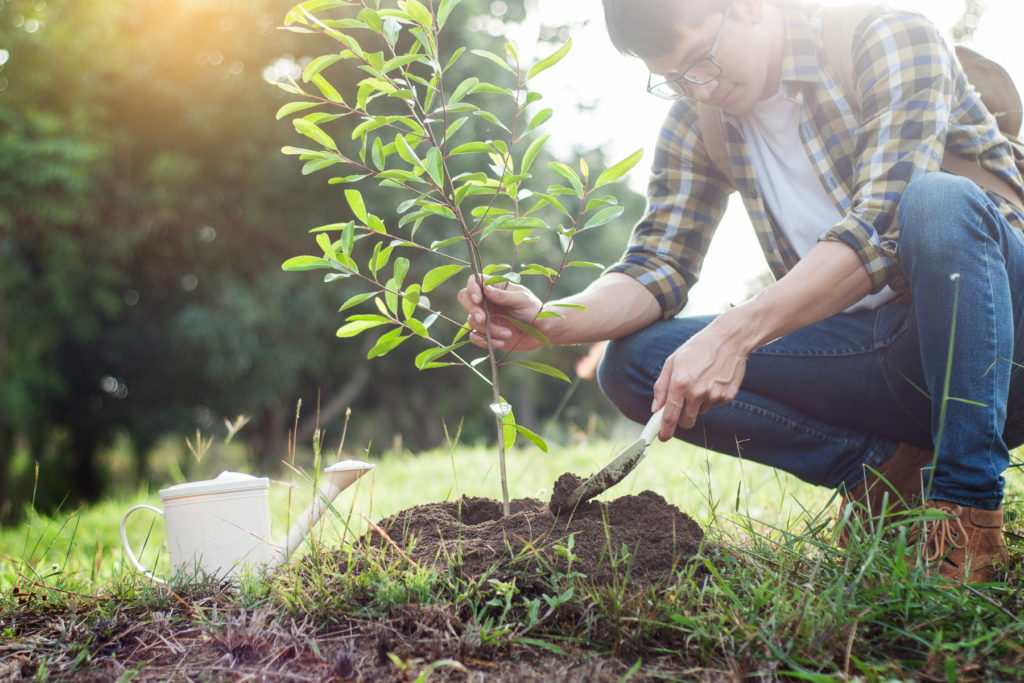
Strategic Plant Selection
When selecting native plants for your garden, consider these important factors:
- Match Plants to Site Conditions: Choose species that naturally thrive in conditions similar to those in your garden. The Lady Bird Johnson Wildflower Center’s Native Plant Database allows you to search for plants based on specific growing conditions.
- Consider Plant Communities: Rather than selecting plants individually, think about how they grow together in nature. Combining plants that naturally coexist creates more sustainable gardens requiring less intervention.
- Balance Seasonal Interest: Select a variety of plants that provide visual interest throughout the year, with different blooming times, fall colors, winter structure, and textural elements.
- Start with Keystone Species: Prioritize plants that support the most wildlife. Oaks, cherries, willows, and native perennials like goldenrod and asters provide exceptional ecological value.
Implementation Strategies
Once you’ve developed your plan, implement it using these practical approaches:
- Replace Plants Gradually: As non-native plants decline or require replacement, substitute them with native alternatives that serve similar functions in the landscape.
- Create Native Islands: Establish small native plant gardens within your existing landscape, gradually expanding them over time as you become more familiar with their care and characteristics.
- Convert Lawn Areas: Transform portions of your lawn into native plant beds, focusing initially on areas that are difficult to maintain or that receive little use.
- Use Native Plants in Containers: Experiment with native plants in containers before committing to in-ground plantings, particularly for species you’re unfamiliar with.
Designing a New Native Plant Garden
If you’re starting from scratch or completely redesigning an existing space, you have the perfect opportunity to create a cohesive native plant garden that balances ecological function with aesthetic appeal.
Design Principles
Apply these fundamental design principles to create an attractive and functional native landscape:
- Layer Your Plants: Mimic nature’s vertical structure by incorporating groundcovers, perennials, shrubs, and trees. This multi-layered approach maximizes habitat value and creates visual richness.
- Mass Plantings for Impact: Group multiple plants of the same species together to create visual impact and provide sufficient resources for wildlife. The National Park Service recommends planting in groups of at least three to five plants of the same species.
- Consider Plant Architecture: Pay attention to plant forms, textures, and structures. Combine plants with different growth habits—upright, mounding, spreading—to create dynamic compositions.
- Embrace Seasonal Shifts: Unlike conventional landscapes that strive for year-round sameness, native gardens celebrate seasonal changes. Design for a progression of interest throughout the year.
- Create Habitat Features: Incorporate elements like brush piles, rock stacks, dead trees (where appropriate), and water sources to enhance your garden’s wildlife value.
Maintenance Considerations
Native plant gardens require different maintenance approaches than conventional landscapes:
- Establish an Ecological Mindset: Shift from “controlling” the garden to “guiding” its development. Accept some level of natural dynamics, including plant competition and wildlife activity.
- Practice Strategic Intervention: Rather than routine maintenance, observe your garden closely and intervene only when necessary to maintain ecological health and desired aesthetics.
- Learn Proper Pruning Techniques: Many native plants respond differently to pruning than conventional landscape plants. Research species-specific pruning requirements or consult with native plant specialists.
- Allow for Self-Seeding: Many native plants will spread naturally through seeds, creating a more naturalistic garden that evolves over time. Learn to recognize seedlings of desirable species.
- Leave Winter Structure: Rather than cutting everything back in fall, leave seed heads and stems standing through winter to provide food and shelter for wildlife. The U.S. Fish and Wildlife Service recommends this approach to support overwintering pollinators.

Overcoming Common Challenges
As you incorporate native plants into your garden, you may encounter several challenges. Here are strategies for addressing the most common issues:
Managing Expectations
One of the biggest challenges for gardeners transitioning to native plants is adjusting their expectations:
- Establishment Period: Native plants often follow the “sleep, creep, leap” pattern—appearing dormant the first year, growing modestly the second year, and flourishing the third year. Be patient during this establishment phase.
- Natural Aesthetics: Native gardens typically have a more relaxed, naturalistic appearance than highly manicured conventional landscapes. Appreciate these qualities rather than trying to force natives into formal designs.
- Seasonal Changes: Unlike many exotic ornamentals bred for extended bloom periods, native plants often have shorter, more intense flowering seasons followed by equally important seed-setting phases.
Neighborhood Concerns
Sometimes neighbors may have concerns about native landscapes that differ from conventional yards:
- Create Intentional Borders: Use clean edges, fencing, or ornamental borders to create a frame that signals intentional design rather than neglect.
- Focus on Tidiness in Visible Areas: Maintain areas visible from the street with special attention, saving wilder, more naturalistic plantings for less visible portions of your property.
- Share Your Knowledge: Educate neighbors about the benefits of your garden by creating small signs, offering tours, or sharing excess plants. The Audubon Society offers resources to help explain the value of native landscapes.
- Check Local Regulations: Before establishing a native landscape, review homeowner association rules and municipal codes regarding landscaping. Some areas have outdated ordinances that may restrict natural landscapes.
Conclusion: The Growing Native Plant Movement
As you embark on your native plant gardening journey, you’re joining a growing movement that’s transforming American landscapes one garden at a time. By incorporating native plants into your outdoor spaces, you’re creating not just a beautiful garden, but a functioning ecosystem that contributes to the larger environmental health of your community.
Whether you start small with a few native perennials or transform your entire property into a native plant sanctuary, every step toward ecological gardening makes a difference. As the renowned entomologist Douglas Tallamy notes, “This approach to gardening fundamentally changes our relationship with nature, making us active participants in sustaining the ecosystems that support all life on earth.”
The future of gardening in America is increasingly aligned with ecological principles, with native plants playing the starring role. By embracing this approach now, you’re positioning yourself at the forefront of a significant shift in how we interact with and enhance our living spaces—creating gardens that are not only beautiful and personal, but that also meaningfully contribute to the health of our shared environment.
Ready to get started? Your local native plant society, extension office, or the U.S. Forest Service’s Native Gardening resources can provide region-specific guidance to help you begin your native plant journey today.

